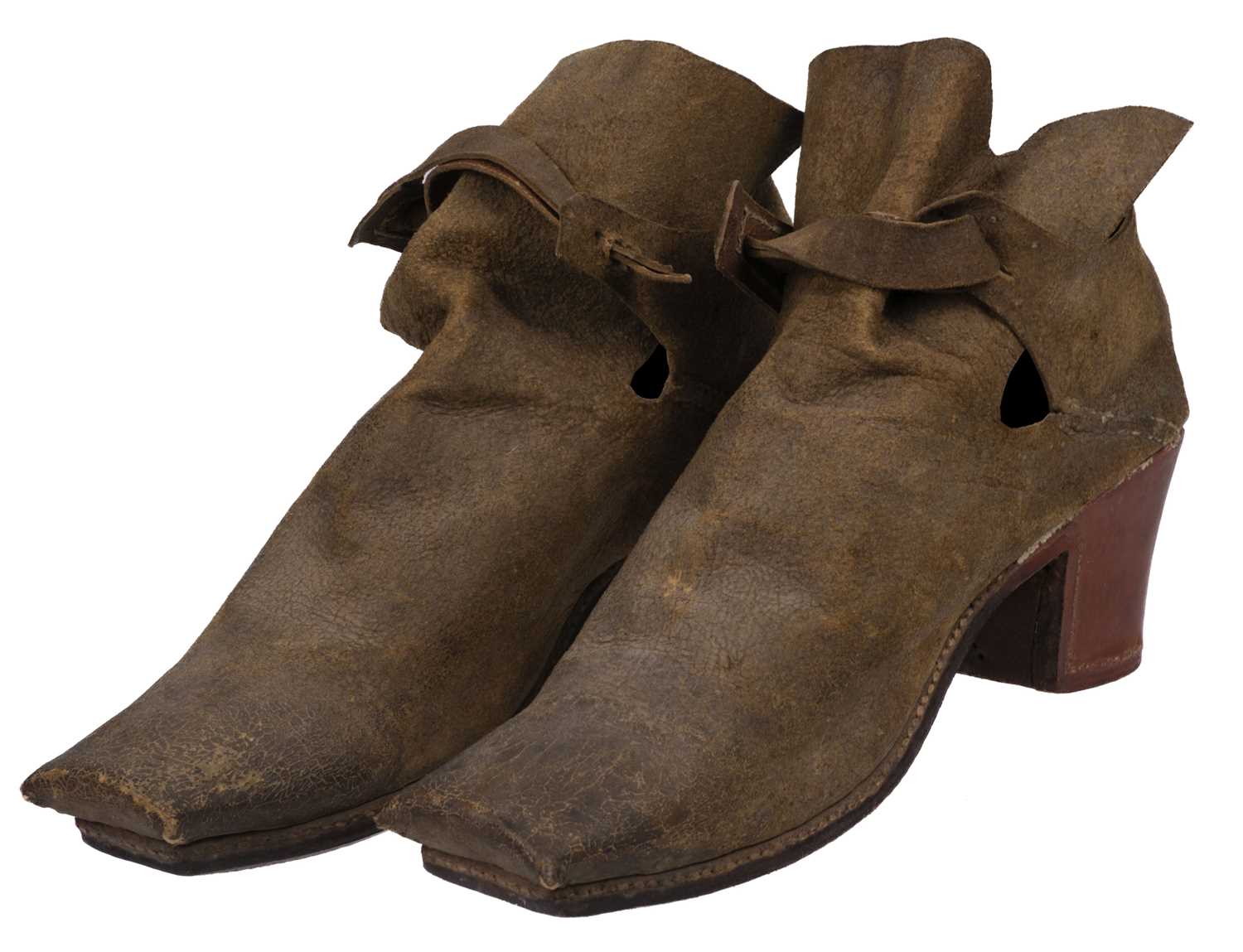Textiles at Dominic Winter Auctioneers: A Review of 2024
.png)
It has been another busy year for our Textiles Department. We have a growing international reputation, so our clients tell us, for the excellence of our research and cataloguing of textiles, and some of the remarkable results we have achieved are testament to that.
We began the year in March with an eclectic sale which was particularly strong in shawls, fans, clothing, early fabrics and lace. We were fortunate enough to be entrusted with a large number of items from The Peta Smyth Collection, which featured, amongst other things, early needlework items, passementarie, tapestries, and early damasks and velvets. The prices were solid, mostly towards the top of the estimate and above. We had a strong collection of lace from a number of different vendors, much of which made over the upper end of the estimate, and in the case of several lots, considerably more. We also sold a wonderful Indian palampore, most unusually depicting cashew nuts growing, which, despite some condition issues, made £6,000 on a £4,000-6,000 estimate (lot 743). One of the rarest items in the sale was a complete set of hand-coloured Berlin Chart playing cards (lot 713), each card printed with a petit point chart illustration to embroider. With no auction record on which to base an estimate, our somewhat conservative guide price of £500-700 was quickly left behind, with a final hammer of £2,100. Perhaps rarer still, was a pair of movable silhouette fans, published by Alphonse Giroux in Paris in the 1820s (lot 795). The fans were estimated at £1,500-2,000, but made £4,000. Both fans were in excellent condition, an important contributory factor to the result achieved.
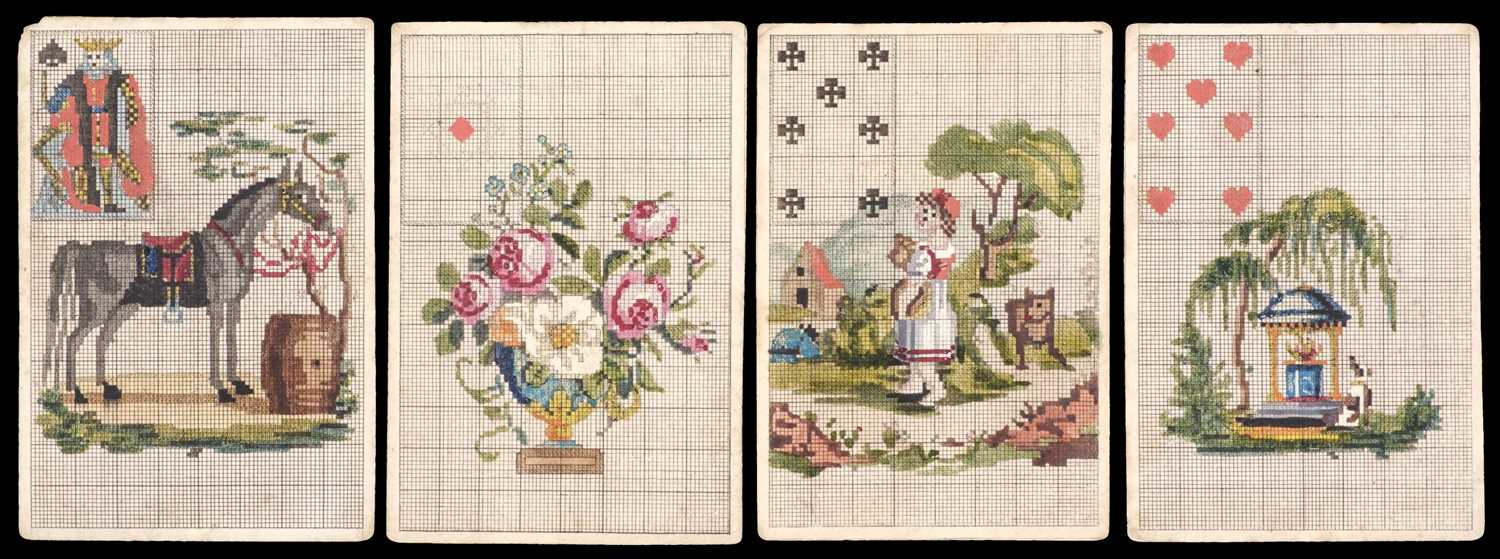
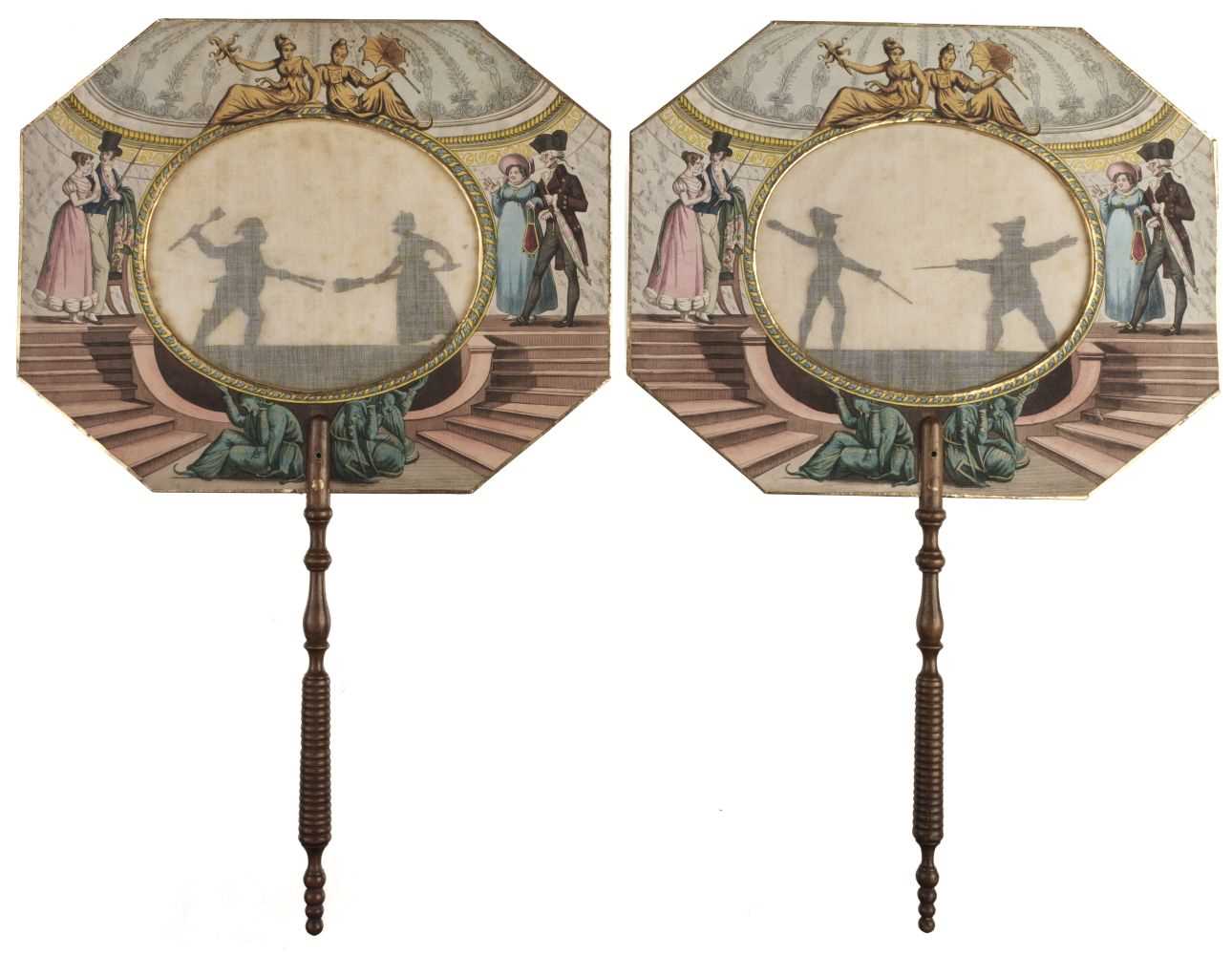
Our July sale was dominated by The Spriggs Collection. Quaker antiquary Martha Spriggs (1777-1866) was a prodigious collector of textiles, autographs, antiquities, and curiosities who passed on her enthusiasm to her children and grandchildren. This part of the collection, being sold by Martha's descendants, was dominated by clothing, needlework items, sewing accoutrements, and miniature objects. The collection aroused a great deal of interest due to its interesting provenance, the generally excellent condition of the lots, and the rarity of many objects. Two outstanding items were a miniature walnut sewing etui (lot 454), estimated at £200-300 which made a record price of £1,700, and an extremely rare 18th century girdle pin cushion ball (lot 455, sold with two other items) estimated at £300-500; although a similar girdle pincushion had sold previously at auction a couple of years previously for £270, ours made an astonishing £18,000. Also in the sale were a number of large embroidered panels made by Arthur H. Lee & Sons in the 1950s (hammer prices between £700 and £1,000 per lot), and several large 19th century Italian mezzaro panels, the most expensive of which sold for £5,200 (lot 516); all pieces which are no doubt destined to fulfil their purpose once more of being part of a decorative scheme. Other highlights were some early needlework items, notably a needlepoint marriage portrait (lot 520), circa 1620s/30s, estimated at £700-1,000, which made double the upper estimate, and an early 18th century needlepoint portrait of Queen Anne (lot 521) which made £2,300 on a £500-700 guide price.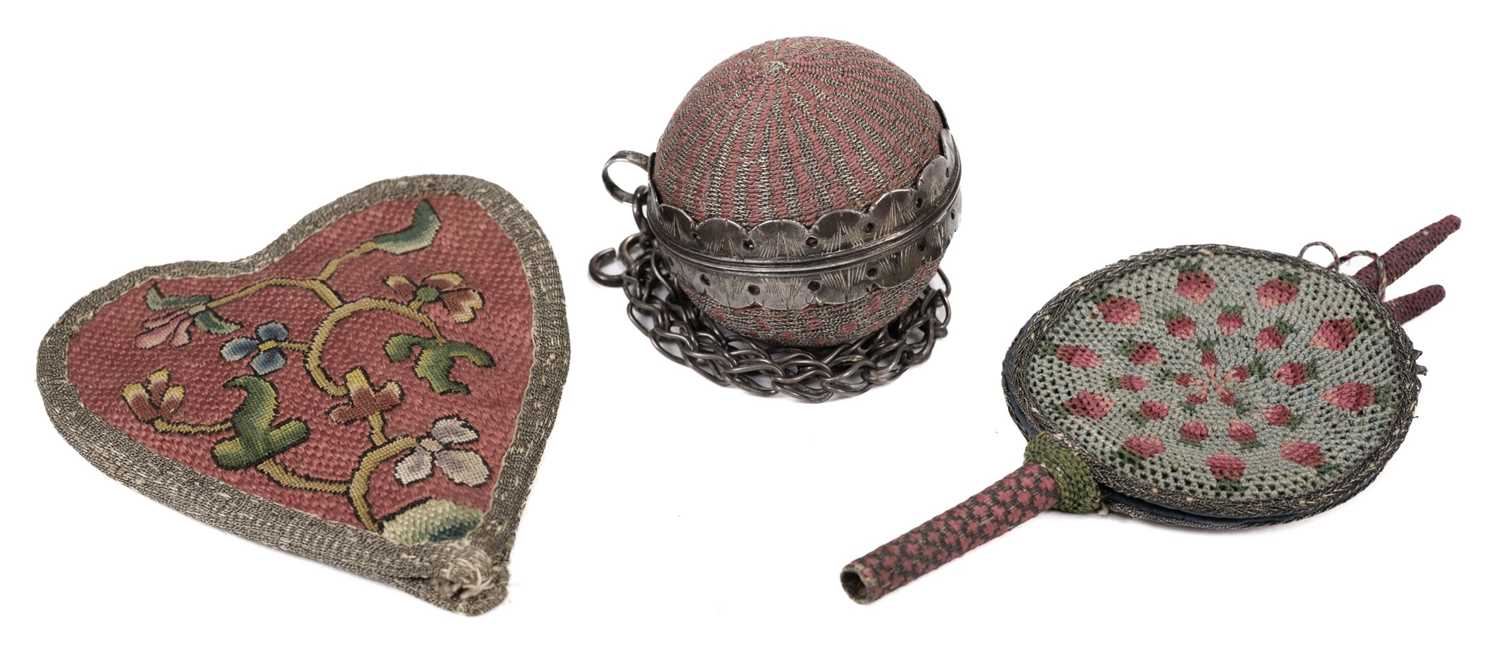
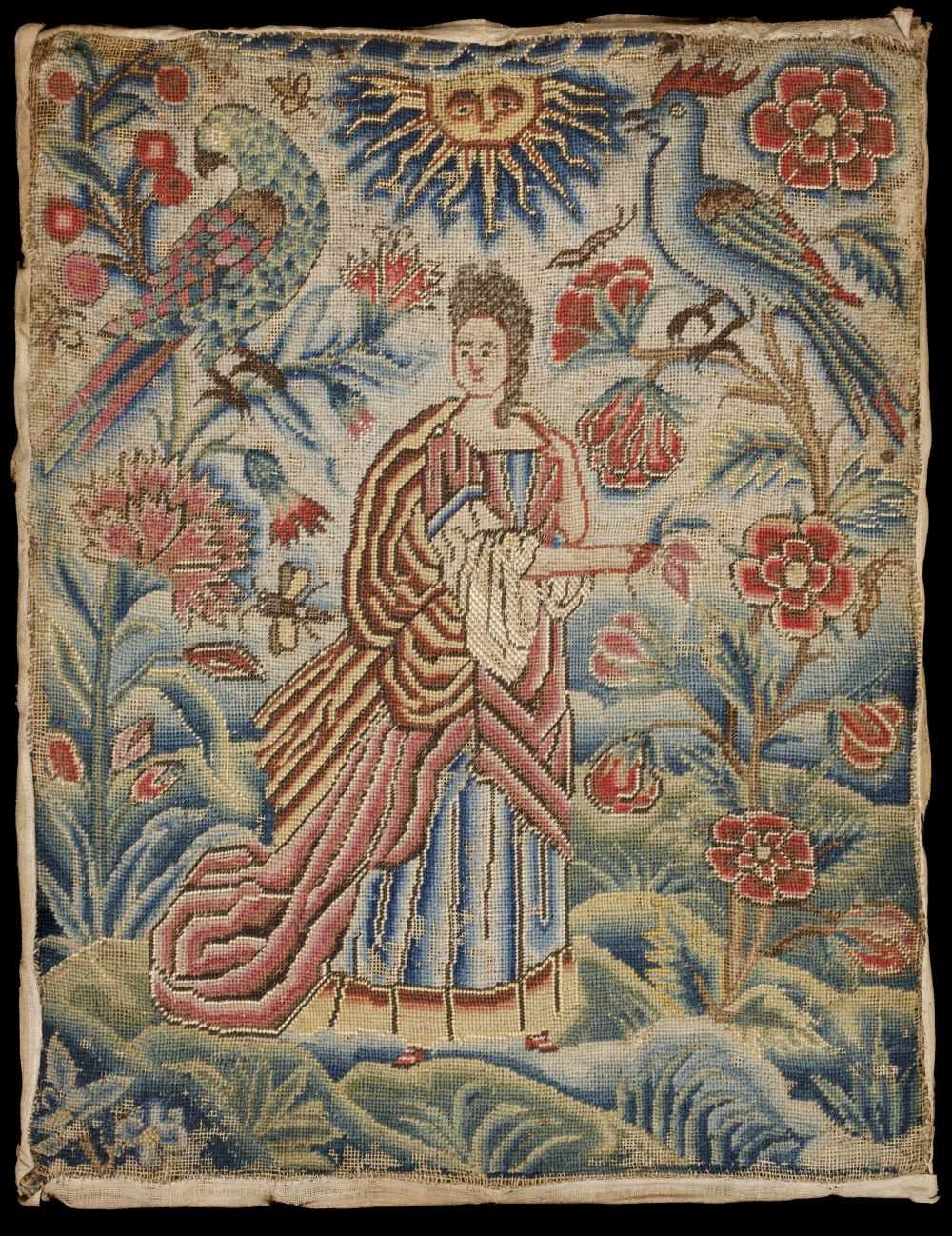
Rounding off the year, in October, was a sale particularly strong in shoes and other clothing. As well as an interesting pair of ladies' riding boots with spur boxes, in rather poor condition (lot 323, estimate £200-300, £200 hammer), we offered an extraordinary pair of mid 17th century gentleman's shoes with red heels (lot 325) which made £1,800, just below the low end of the £2,000-3,000 estimate, despite being in superb condition. A rare pair of sleeve plumpers, circa 1830 (lot 330), made £1,800 on a £300-500 estimate, and an unusual duck egg sewing etui, circa 1818 (lot 362), estimated down at £100-150 due to its poor condition made £850. Perhaps the highlight of the sale, though, was the rare blue sprang sash, circa 1620 (lot 329), which had belonged to the Enys Family of Penryn, Cornwall. Enys family tradition was that the sash had been worn by family members during the English Civil War, although there was no documentary ev idence for this. Such sashes were indeed worn by senior military officers, and were known to have had a practical as well as a decorative purpose; such is their tensile strength (silk being five times stronger than steel) and ability to stretch laterally (due to the sprang technique), that - astonishingly - they were used as stretchers to carry wounded men off the battlefield. The owner was surprised at what was perceived to be a punchy estimate of £1,000-1,500 - and even more astonished when the lot made £6,000. The sash was purchased on behalf of the Enys family - 400 years after it was first made, it went home.
idence for this. Such sashes were indeed worn by senior military officers, and were known to have had a practical as well as a decorative purpose; such is their tensile strength (silk being five times stronger than steel) and ability to stretch laterally (due to the sprang technique), that - astonishingly - they were used as stretchers to carry wounded men off the battlefield. The owner was surprised at what was perceived to be a punchy estimate of £1,000-1,500 - and even more astonished when the lot made £6,000. The sash was purchased on behalf of the Enys family - 400 years after it was first made, it went home.
Upcoming Auctions
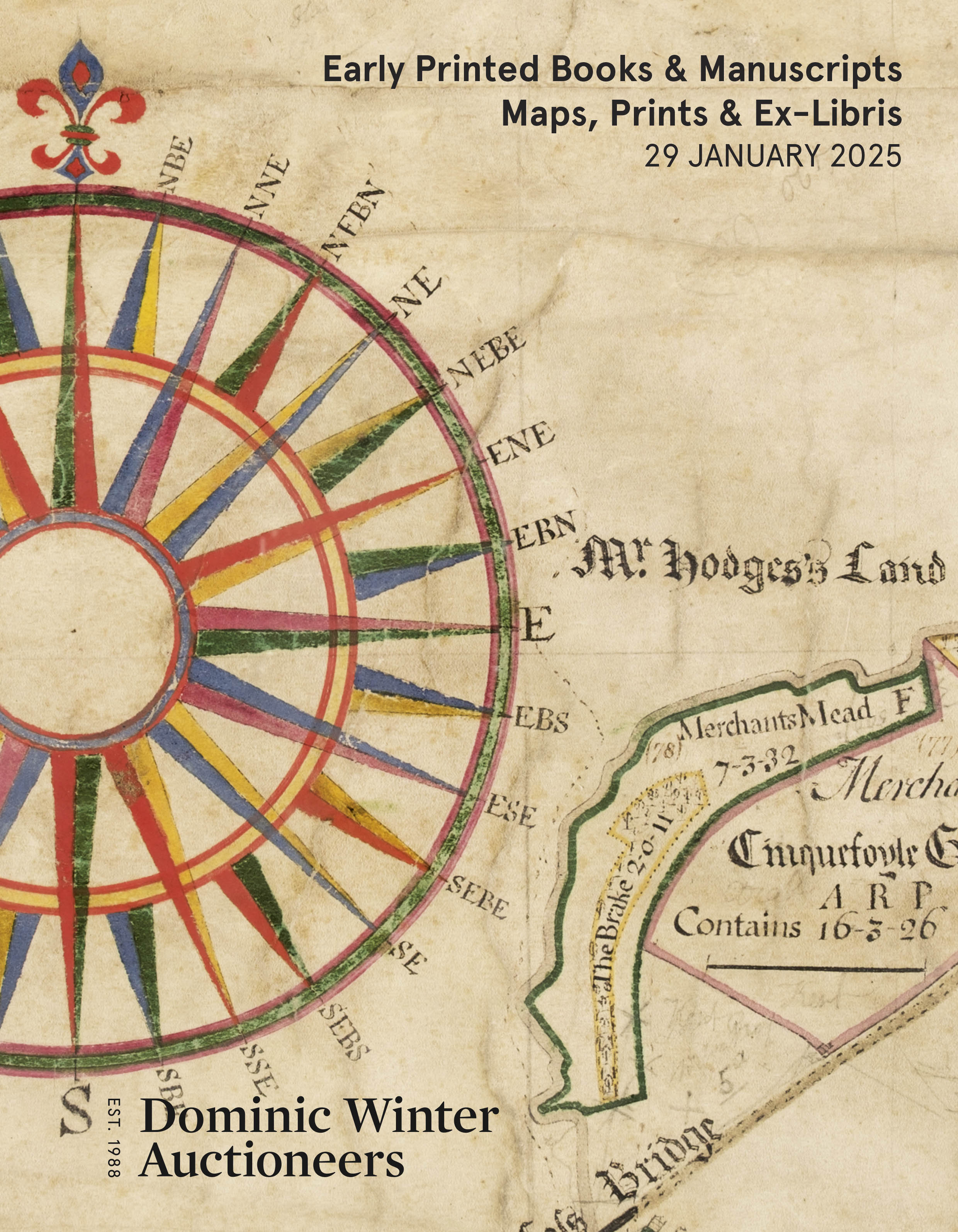
Early Printed Books & Manuscripts, Science, Economics & Philosophy, Maps, Prints & Ex-Libris
To see a page-turning version of our catalogue, please see the Virtual Catalogue.
Live bidding is available on our website on sale day, a BID LIVE button will appear 60 minutes before the sale starts. Please register at least 24 hours before the sale begins. Commission bids can be left on our website up to 1 hour before the sale commences. For telephone bids, please call the office on 01285 860006.
